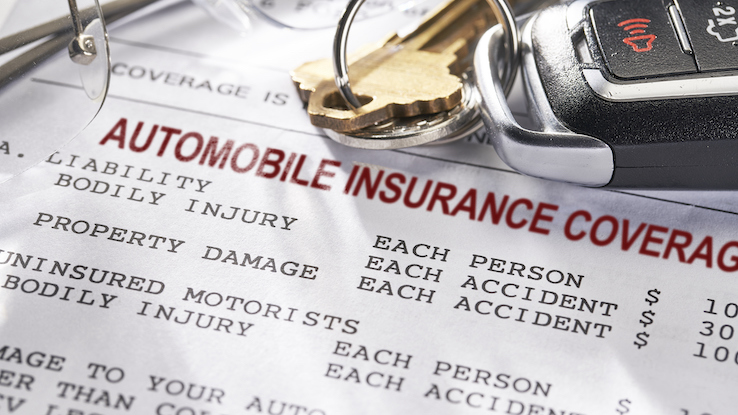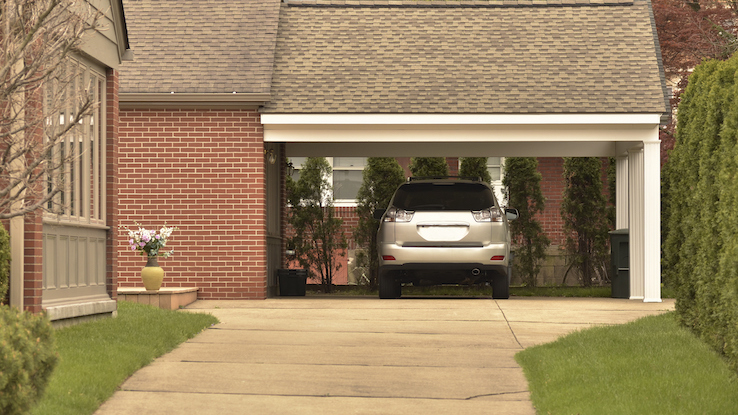Georgia Used Car Dealer License Continuing Education Online

When you're looking for a new insurance policy for your car, you have several options for securing coverage. While using an agent or calling an insurer on the phone are both familiar approaches, buying car insurance online might actually be the simplest choice.
In the process of applying for car insurance, you provide some personal details and information about your vehicle, which allows you to get a near-immediate quote. The processes for new and used car insurance are pretty similar, too, which may work in your favor.
Before you move forward with the online option, though, it's important to understand a few details. Here are 15 things to know about buying car insurance online to help you prepare.
Researching companies before you start requesting quotes can help you determine if an insurer can meet your needs and if it has a solid reputation. Along with offering the right coverage, you want to make sure the company performs well when it comes to customer service, filing claims and other services.
Additionally, see if they provide helpful tools to their customers. For example, claim submission through a smartphone app can streamline that process if you need to use it. Find out which options are available from different companies before you move forward.
2. Get Several Quotes
One of the most popular car insurance hacks for ensuring you don't overpay is to comparison shop. Get several quotes from multiple companies so you can compare coverage levels and costs.
Even if a site provides quotes from several insurers simultaneously, it's usually best to submit your information to every insurance company individually. That allows you to make sure you're providing detailed enough information to each insurer.

3. Review the Coverage Details
Car insurance quotes don't always include the same levels of coverage. Some may reflect different deductibles, which can cause the monthly price to fluctuate between carriers. Similarly, the type of policy itself may vary.
Generally, there are three main coverage categories: comprehensive, collision and liability. Each of those comes with distinct benefits, drawbacks and price points. Ultimately, if the policy types aren't the same, you aren't comparing apples to apples. That said, you want to review the coverage details carefully to see where they line up and how they differ.
4. Bundle to Save
If you also need other types of insurance — such as homeowners' or renters' — getting those policies from the same insurer that carries your car coverage can work in your favor. Many companies offer multi-policy discounts, which may knock 5–25% off of your total cost.
Even if you don't want to move your renters' or homeowners' policy, you could save if you have more than one vehicle covered by the same insurer, too. Referred to as a multi-car discount, these give you a price reduction based on the number of cars on your policy.
5. Discuss Your Safety Features
When you're submitting information to insurers to get quotes, make sure you can list all of the safety features your car has that might lead to discounts. For example, having daytime running lights and anti-theft devices may help you capture some savings.
6. Park in a Garage
If your car is parked in a garage instead of on the street or in a driveway, you may get a discount on your car insurance. These discounts are available because your vehicle is protected from the elements and is harder to steal. As a result, the insurer views you as less of a risk, which works in your favor.
In some cases, having a security system for your garage may result in even more savings. While that isn't always the case, it's wise to mention if your garage is tied to any form of security system, just in case it qualifies you for a larger discount.

7. Improve Your Credit Score First
Your credit score can potentially impact your insurance rates, depending on where you live. When insurers are allowed to factor your credit into the equation, the general assumption is that individuals with lower scores represent greater overall risks. Having poor credit could work against you and lead to higher coverage costs.
While you may not have time to boost your credit score if you need coverage immediately, it's wise to do so if time is on your side. Otherwise, secure a policy immediately and then get fresh quotes from several competitors later on when your score improves.
8. Drive Safely
Your driving record is one of the biggest factors when it comes to your vehicle insurance rates. By driving safely and avoiding moving violations and at-fault accidents, you typically spend less.
If you choose an insurer that offers a driving-monitoring device to secure discounts on your policy, make sure you're cautious when you're on the road. Avoid sudden accelerating and decelerating, as well as quick, jerky movements. Otherwise, you likely won't qualify for any discounts or could end up with higher rates down the line.
9. Choose the Right Deductible
One classic way to reduce your auto insurance rate is to select a higher deductible. However, if you can't cover that out-of-pocket cost after an accident or after your vehicle is damaged, you may not be able to move forward with repairs.
Instead, choose an initial deductible that fits well with your current budget or emergency fund. Then, when you build up a bigger financial buffer, contact your insurer to update your pricing based on a higher deductible.

10. Don't Automatically Get Gap Coverage
Gap coverage is designed to handle the difference between the amount you owe on your auto loan and the current value of your car. That way, if your vehicle is totaled in an accident, you can pay off the loan in full even if your car is worth less than the amount remaining on your loan.
It's a helpful option, but you should only consider gap coverage if your vehicle loan exceeds your car's value. If it doesn't, then you won't benefit from what gap coverage provides, so it's better not to pay for it.
11. Remove Unnecessary Coverage
In some cases, policies come with coverage for rental cars, roadside assistance and other useful extras. However, if you don't need them in your policy, having those features removed can lead to savings. Plus, you can typically add them back on if your situation changes. You can effectively switch them on and off, allowing you to save more money over time.
12. Don't Overlook Mileage Discounts
When you initially get an auto insurance quote, it may be based on the assumption that you drive the average distance each year, which usually runs near 12,000 miles. If you travel less than that, you might be able to save on your car insurance with a low mileage discount.
Alternatively, you may want to explore pay-as-you-go insurers if you don't drive often. These charge you based on the number of miles you drive during a specific period, which is usually one month. While this does mean your monthly expenses may vary, it can lead to savings that are large enough to offset any potential inconvenience.

13. Take an Approved Defensive Driving Course
While this option won't lead to a discount in every case, some insurers do offer discounts to adult drivers who take defensive driving courses. These classes help you learn how to avoid dangers that can lead to accidents to reduce your overall risk on the road.
In many cases, you do need to take an approved defensive driving course to qualify for a price reduction on your insurance. If you haven't taken one yet, find out if the insurer offers this discount and, if so, what local programs are approved.
Usually, defensive driving courses do come with a cost. You'll want to weigh the price of the class against the discount size. Additionally, find out if the discount only lasts for a certain period of time after completing the course. You may need to pay for the class again and pass it every few years to remain eligible, which could offset some of the potential savings.
Most basic car insurance policies don't cover rideshare driving by default. Rideshare drivers need to pay for extra coverage relating to that activity. Otherwise, certain types of damage that occur while operating the vehicle as a rideshare may not be covered. This can result in a large out-of-pocket expense.
15. Ask About More Discounts
Many insurers offer a range of discounts they don't openly advertise. For example, if you or another covered driver are a student with a suitable GPA — typically around 3.0 or above — then your policy might be eligible for a good student discount. There are also usually options for retirees, teachers, first responders, military members, veterans and more.
If you don't see a list of all possible discounts online, you may need to follow up with the insurer or explore its website to learn more. By doing so, you may find some savings you wouldn't have captured otherwise, resulting in a lower overall bill.
Source: https://www.askmoney.com/insurance/buy-car-insurance-online-tips?utm_content=params%3Ao%3D1465803%26ad%3DdirN%26qo%3DserpIndex&ueid=242ee846-6db7-47a7-a50e-c36e363d320c
0 Response to "Georgia Used Car Dealer License Continuing Education Online"
Post a Comment